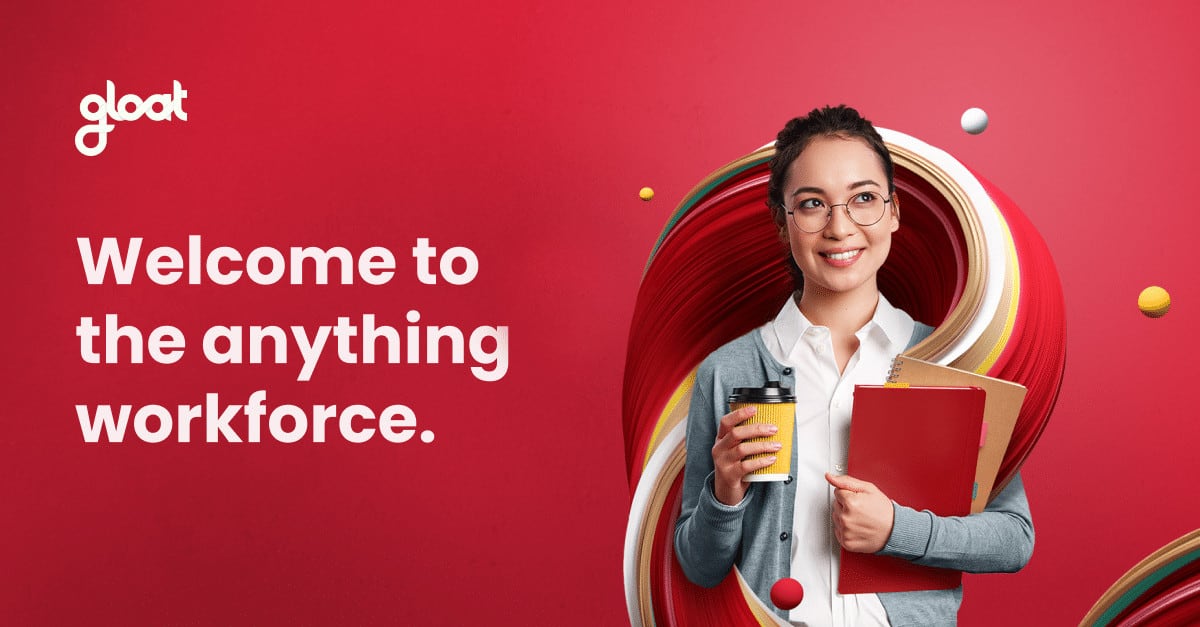8 L&D strategy tips for building a future-ready organization
What leaders must ask to transform talent development

As companies continue looking for ways to evolve for the new world of work—optimized systems, agile operating models, and flexible work structures—one aspect that can’t be ignored is Learning and Development (L&D). Learning and development strategies have moved past the standard split of 70% on-the-job, 20% mentorship, and 10% formal education; employees expect more experiential learning opportunities and are willing to find employers able to meet those standards.
L&D strategies must reflect the needs of modern workforces: an emphasis on skills and democratized access to relevant training. As business needs shift rapidly, enabling a workforce with a broad set of skills, and unlocking the capacity for employees to pursue relevant experiences, is more important than ever before.
For organizations to thrive in 2022 and beyond, HR leaders have to take advantage of the current tools available to them to transform their development practices. Now that skills and agility are prerequisites for success, businesses must rethink old L&D standards to thrive in the new world of work.
How investing in L&D creates future-ready companies
A lot of recent HR talk has revolved around creating more agile workforces. Organizational silos, once seen as a way to streamline and organize, are falling out of favor to embrace more dynamic ways of work centered around skills (also known as the skills-based organization). But to continue building flexible workforces, current L&D practices need the same treatment.
Silos don’t just exist in org charts. The value of every employee in an organization has never been more apparent as skill gaps grow and talent shortages reach a critical mass across nearly all industries. L&D efforts can help bridge those gaps with the right insights into a workforce’s complete capabilities. However, allowing those capabilities to grow means empowering all employees to pursue courses relevant to their interests and skills.
One of the key tools to opening up L&D opportunities across an organization is the talent marketplace. With the ability to match employees to relevant learning opportunities, L&D strategies can be implemented in more-flexible ways than simply training for the skills tied directly to an employee’s job description. The dynamic capabilities of talent marketplaces far outspeed what was once possible through manual systems; skill, role, interest, and goal-based data are used to connect talent to meaningful growth opportunities.
In addition to strengthening a workforce’s skill set, agile L&D strategies enhance employee engagement. When workers have access to on-the-job development opportunities, engagement increases by roughly 30%. Providing these opportunities means giving employees the chance to shine on their terms by pursuing upskilling and cross-skilling opportunities that reflect their passions.
As skills become the backbone of future-ready work structures, making sure that employees have the tools to succeed requires full buy-in from leadership. And those capabilities are changing—Gartner research estimates that 58% of the global workforce will need new skills to successfully carry out their jobs, and being able to hire externally to bridge skill gaps won’t always be possible. But by encouraging your workforce to pursue L&D opportunities that address growing needs, those skills can be developed internally.
8 questions leaders must answer to optimize their L&D strategy
To transform outdated L&D strategies, HR leaders must make sure they define what success looks like beforehand. Some of the most important questions to answer are:
#1. What skills are most important to my company’s success?
Before thinking about what form a new L&D strategy will take, it’s critical to know what it needs to accomplish. Every organization’s needs will differ from its competitors. Through honest self-assessment, training programs can strengthen business-critical skills without creating redundancy or allotting unnecessary resources for functions that won’t move the needle.
#2. Which departments must be involved with L&D strategy optimization?
In short: all of them. Though HR will play a leading role, all managers and departments must engage in the process to make sure the implementation accomplishes business needs. Even if only to collect feedback on where managers are struggling to fill skill gaps, their input must be heard and used to successfully design the framework.
#3. Do we have any skill gaps that can be filled internally?
Understanding what skills already exist within a company can be difficult, but modern software solutions can help provide insights. Workforce intelligence serves as a centralized platform that managers can access to better inform talent strategies with real-time data—putting skills and capabilities in full view. Workforce intelligence is able to not only identify skill gaps but help plan for which skills will become valuable to the market in the future.
#4. Can employees easily access upskilling and reskilling opportunities?
Even the best L&D strategy will fall short if workers can’t use it. Talent marketplaces serve as excellent tools to democratize access to training and mentorship programs, promoting engagement across the organization regardless of an employee’s geographic location or department. The platforms generate suggestions for career development based on an employee’s unique interests and goals, removing the guesswork from the equation.
#5. Why haven’t employees engaged with our L&D programs before?
By understanding where past efforts fell short, old mistakes can be avoided. Focus on removing barriers to entry for workers, mitigating bias, and cultivating an employee-led approach to career development.
#6. How will we measure success for our new L&D strategy?
Good results come from good data. Whether it’s training for certain skills, improving succession planning, or promoting internal DEIB efforts, know what your company’s L&D strategy must accomplish before building the framework. Workforce intelligence helps here again; by starting with full insights into the company’s skill sets, leaders can target the points of improvement more strategically.
#7. What L&D roadblocks should we be watching out for?
Take feedback from all departments within the organization to see where potential obstacles may exist. Again, ensuring engagement with L&D programs is crucial, so taking the time to see the road ahead can help mitigate costly adjustments later on. Workforce intelligence gives business leaders insights into their workforce, showing a company’s full set of skills and how they stack up against the industry.
#8. Who can get the most out of our new L&D efforts?
Everyone. Skill needs will continue to evolve, changing with the innovations still being dreamed up today. Staying on top of them is a constant battle that requires everyone from the C-suite through a company’s new hire to continue honing new skills.
Leveraging technology to create an L&D strategy fit for 2022 and beyond
No matter what shape your new L&D strategy takes, skills will rest at the heart of it. Make sure that accessibility and engagement stay on top of your priority list, as the new strategies will need both to successfully build a workforce ready to face future challenges.
Workforces are becoming centered around skills, and our recent survey of more than 1,300 employees and HR managers shows that devising a skills-based strategy is more critical than ever before. Check it out here to see the 10 workforce skills statistics that every HR leader needs to know.




